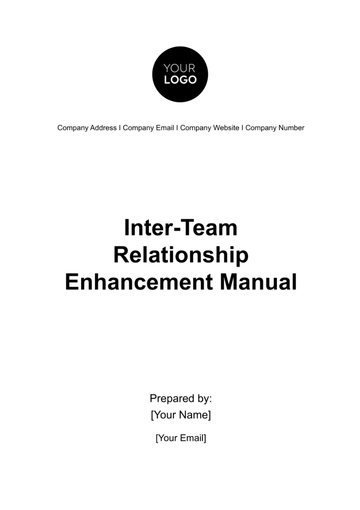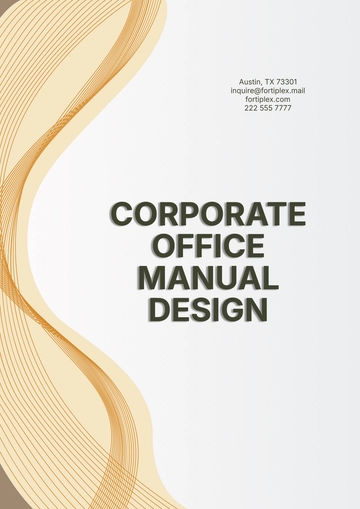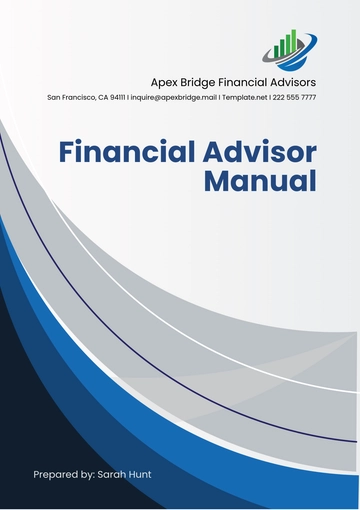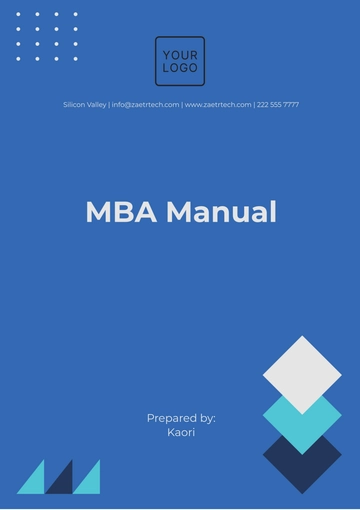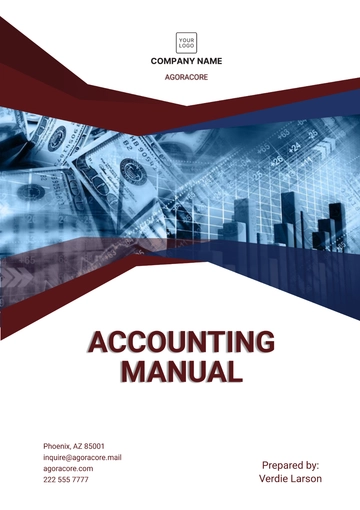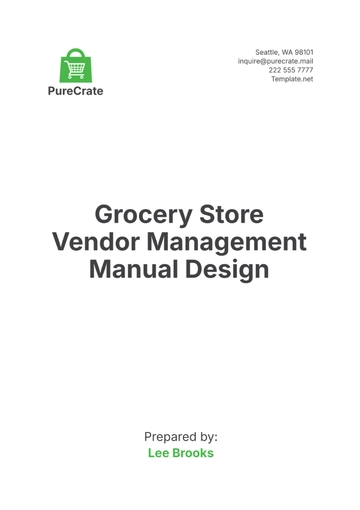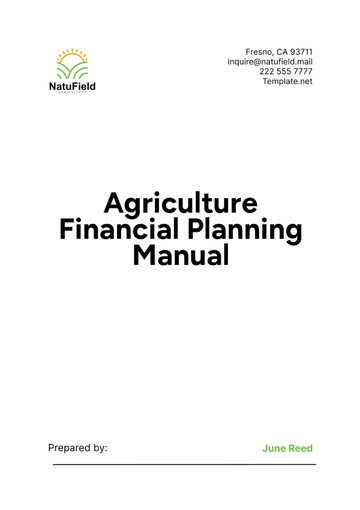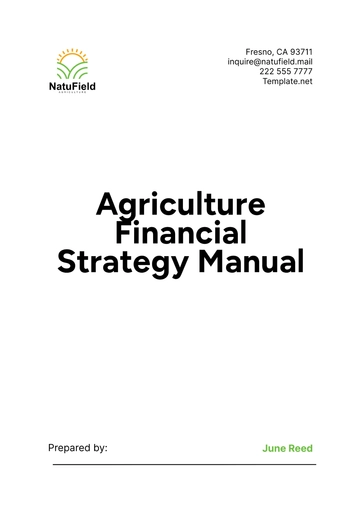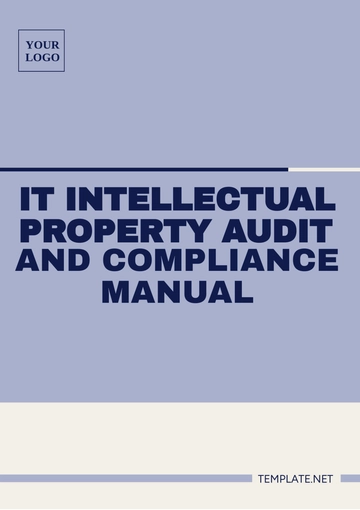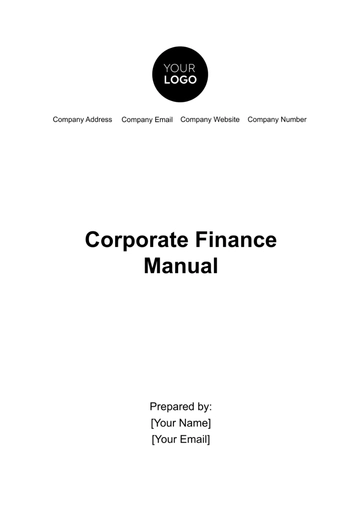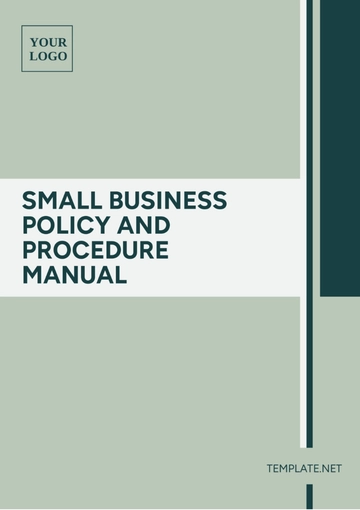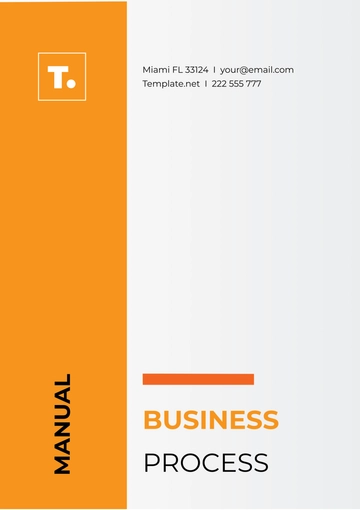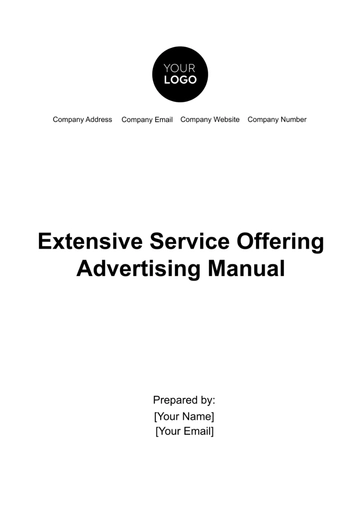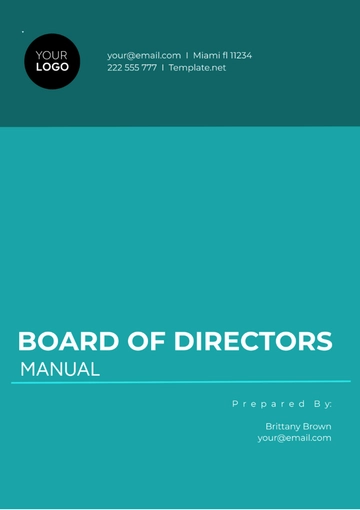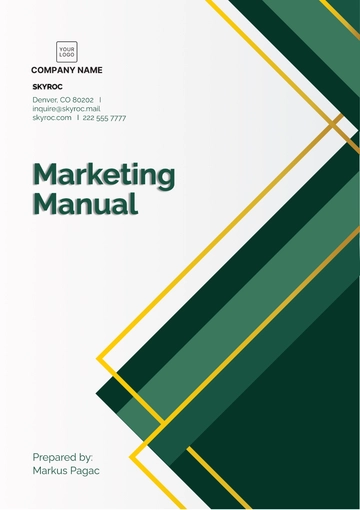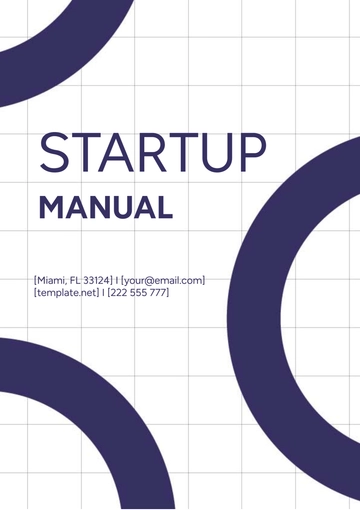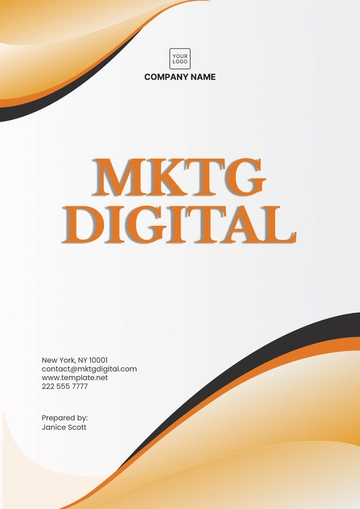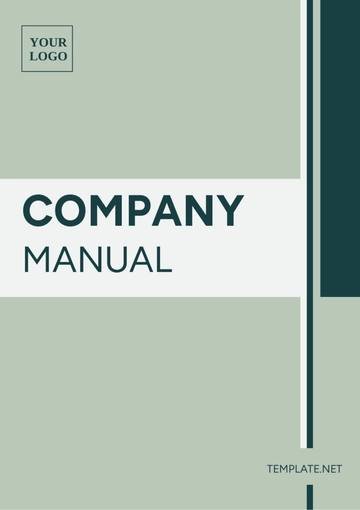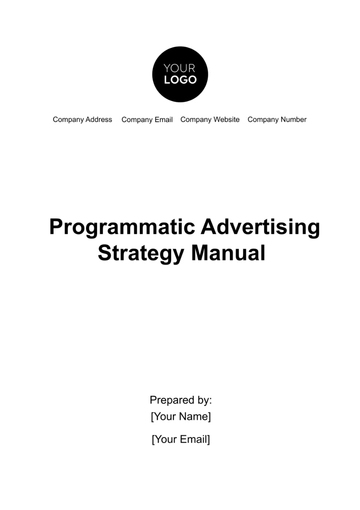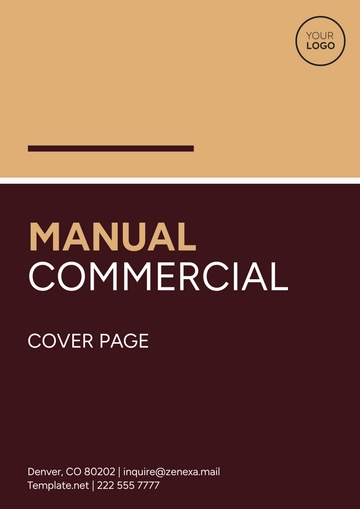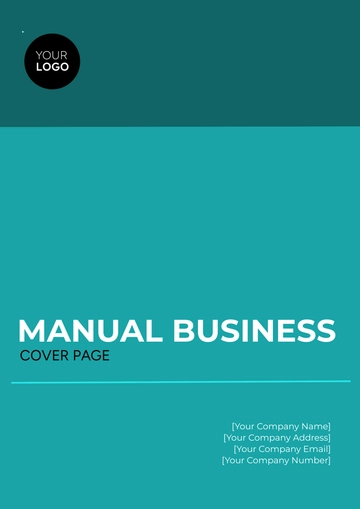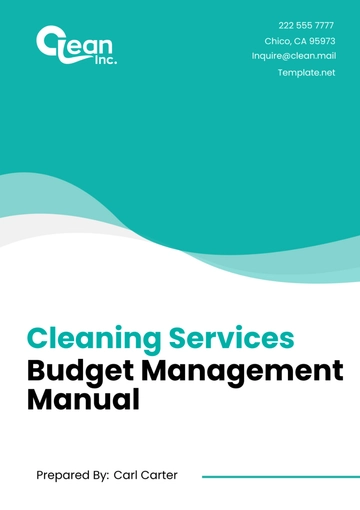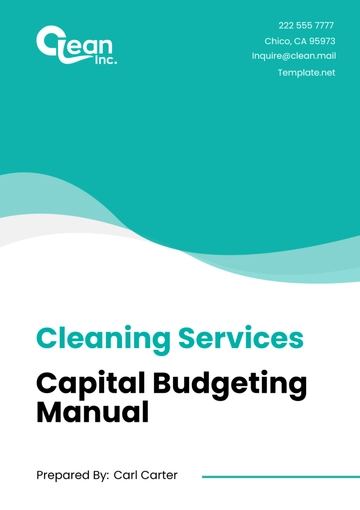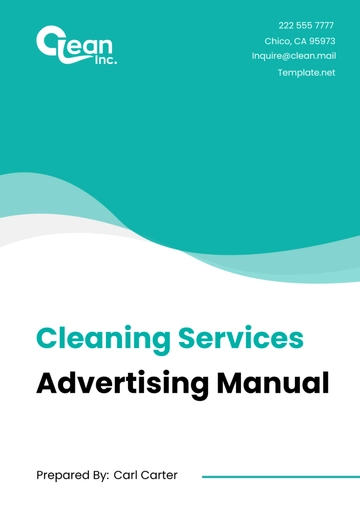Free Board of Directors Manual
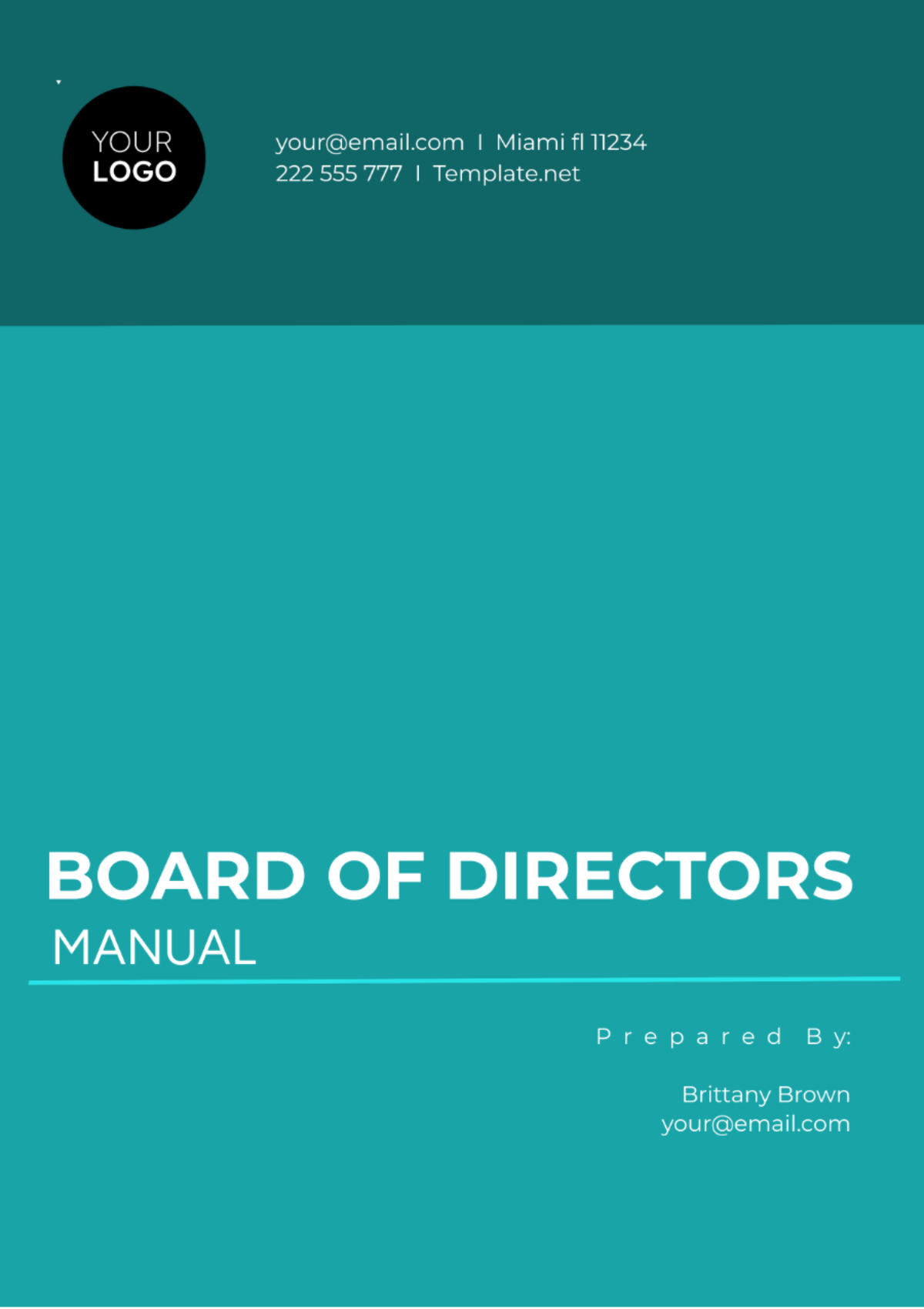
Name | [YOUR NAME] |
|---|---|
Company | [YOUR COMPANY NAME] |
Department | [YOUR DEPARTMENT] |
Date | [DATE] |
I. Introduction
Welcome to the Board of Directors Manual provided by [YOUR COMPANY NAME]. This comprehensive manual is designed to serve as a valuable resource for members of the board of directors, offering guidance and reference material to facilitate effective governance and decision-making within the organization.
In this manual, you will find detailed information on the roles, responsibilities, and expectations of board members, as well as policies and procedures related to corporate governance. It is essential for all board members to familiarize themselves with the contents of this manual to fulfill their duties effectively and contribute to the success of [YOUR COMPANY NAME].
II. Board Structure and Responsibilities
A. Composition of the Board
The board of directors of [YOUR COMPANY NAME] is composed of [NUMBER] members, including both executive and non-executive directors. The composition of the board is designed to ensure a diverse range of perspectives and expertise to guide the strategic direction of the company.
Key responsibilities of the board include:
Setting Strategic Direction: Establishing the company's mission, vision, and long-term objectives.
Overseeing Management: Monitoring the performance of executive management and providing guidance as needed.
Risk Oversight: Identifying and mitigating risks that may affect the company's operations or reputation.
Financial Oversight: Reviewing financial statements, budgets, and major transactions to ensure financial stability and compliance.
Corporate Governance: Ensuring adherence to ethical standards, legal requirements, and best practices in corporate governance.
B. Board Meetings and Procedures
Regular board meetings are held [FREQUENCY], with additional meetings scheduled as needed to address specific matters. Meetings are conducted in accordance with established procedures outlined in the bylaws and governance guidelines of [YOUR COMPANY NAME].
Key elements of board meetings include:
Agenda Setting: The chairperson, in consultation with the CEO and board members, sets the agenda for each meeting, prioritizing important matters for discussion.
Preparation: Board members are provided with meeting materials, including agendas, financial reports, and background information, in advance to facilitate informed decision-making.
Conduct of Meetings: Meetings are conducted in an orderly manner, with the chairperson facilitating discussions, ensuring adherence to the agenda, and providing opportunities for all board members to participate.
Decision-Making: Board decisions are made through consensus or voting, with minutes recorded to document discussions, decisions, and action items.
Stay tuned for the next sections where we delve deeper into specific policies, procedures, and best practices for effective governance.
III. Corporate Governance Policies
A. Code of Conduct and Ethics
The Code of Conduct and Ethics outlines the standards of behavior expected from board members, ensuring integrity, transparency, and accountability in all actions and decisions. [YOUR COMPANY NAME] is committed to upholding the highest ethical standards and expects all board members to adhere to the principles outlined in the code.
Key elements of the Code of Conduct and Ethics include:
Conflicts of Interest: Board members are required to disclose any conflicts of interest and refrain from engaging in activities that may compromise their objectivity or independence.
Confidentiality: Board members must maintain confidentiality regarding sensitive information discussed during board meetings and refrain from disclosing confidential information to unauthorized individuals.
Compliance with Laws and Regulations: Board members are expected to comply with all applicable laws, regulations, and corporate policies governing the company's operations.
Professional Conduct: Board members are expected to conduct themselves in a professional manner, treating colleagues, stakeholders, and fellow board members with respect and dignity.
B. Risk Management Framework
The Risk Management Framework outlines the processes and procedures for identifying, assessing, and managing risks that may impact the achievement of [YOUR COMPANY NAME]'s objectives. Effective risk management is essential for safeguarding the interests of stakeholders and ensuring the long-term success of the organization.
Key components of the Risk Management Framework include:
Risk Identification: Regularly assess and identify potential risks across all areas of the organization, including operational, financial, legal, and reputational risks.
Risk Assessment: Evaluate the likelihood and potential impact of identified risks to prioritize mitigation efforts and allocate resources effectively.
Risk Mitigation Strategies: Develop and implement strategies to mitigate identified risks, including risk avoidance, risk transfer, risk reduction, and risk acceptance.
Monitoring and Reporting: Continuously monitor and review the effectiveness of risk mitigation measures, and provide regular reports to the board on the status of key risks and mitigation activities.
By implementing robust governance policies and procedures, [YOUR COMPANY NAME] aims to enhance transparency, accountability, and trust among stakeholders while promoting sustainable growth and value creation.
IV. Financial Oversight and Reporting
A. Financial Reporting Procedures
Financial reporting procedures ensure accuracy, transparency, and compliance with accounting standards and regulatory requirements. [YOUR COMPANY NAME] follows rigorous financial reporting processes to provide stakeholders with reliable and timely information on the company's financial performance.
Key elements of financial reporting procedures include:
GAAP Compliance: Prepare financial statements in accordance with Generally Accepted Accounting Principles (GAAP) to ensure consistency and comparability.
Internal Controls: Implement internal control measures to safeguard assets, prevent fraud, and ensure the integrity of financial information.
Audit Committee Oversight: The Audit Committee oversees the financial reporting process, including the selection and engagement of external auditors to conduct audits and reviews.
Disclosure Requirements: Ensure compliance with disclosure requirements mandated by regulatory authorities and stock exchanges to provide investors with comprehensive information about the company's financial position and performance.
B. Budget Approval Process
The budget approval process involves the review and approval of the company's annual budget by the board of directors. [YOUR COMPANY NAME]'s budgeting process is designed to align financial resources with strategic priorities and ensure prudent financial management.
Key steps in the budget approval process include:
Budget Preparation: The finance department prepares a draft budget based on input from department heads and senior management, taking into account projected revenues, expenses, and capital expenditures.
Board Review: The board of directors reviews the draft budget, considering factors such as market conditions, industry trends, and strategic initiatives.
Approval and Adoption: Following review and discussion, the board approves the final budget, which serves as a blueprint for financial operations throughout the fiscal year.
Monitoring and Variance Analysis: Throughout the year, actual financial performance is monitored against the approved budget, with variances analyzed and reported to the board on a regular basis.
By maintaining robust financial oversight and reporting mechanisms, [YOUR COMPANY NAME] aims to ensure fiscal responsibility, transparency, and accountability to stakeholders.
V. Board Committees
A. Audit Committee
The Audit Committee plays a critical role in overseeing the company's financial reporting process, internal controls, and risk management practices. Comprised of independent directors with financial expertise, the Audit Committee ensures the integrity and transparency of financial information and compliance with regulatory requirements.
Key responsibilities of the Audit Committee include:
Financial Reporting Oversight: Review and assess the adequacy and accuracy of financial statements and disclosures.
Internal Control Evaluation: Monitor the effectiveness of internal control systems and risk management practices.
External Audit Engagement: Select and engage external auditors to conduct audits and reviews of the company's financial statements.
Whistleblower Protection: Establish procedures for the receipt and investigation of complaints regarding accounting, internal controls, and auditing matters.
B. Compensation Committee
The Compensation Committee is responsible for designing and overseeing executive compensation programs to attract, retain, and motivate key executives and align their interests with those of shareholders. The committee ensures that compensation practices are fair, reasonable, and consistent with the company's long-term objectives.
Key responsibilities of the Compensation Committee include:
Executive Compensation Review: Evaluate and approve executive compensation packages, including base salary, bonuses, stock options, and other incentives.
Performance Evaluation: Establish performance metrics and benchmarks for evaluating executive performance and determining compensation levels.
Succession Planning: Develop and oversee succession plans for key executive positions to ensure continuity of leadership and talent development.
Shareholder Engagement: Engage with shareholders to solicit input and feedback on executive compensation practices and policies.
By establishing specialized committees with defined responsibilities and expertise, [YOUR COMPANY NAME] enhances board effectiveness and ensures focused oversight in key areas of corporate governance.
VI. Board Policies and Procedures
A. Board Meeting Procedures
Board meeting procedures ensure that meetings are conducted efficiently and effectively, allowing for thorough discussion and decision-making on important matters. [YOUR COMPANY NAME] follows established protocols to facilitate productive board meetings.
Key elements of board meeting procedures include:
Agenda Development: The board chair, in consultation with the CEO and other relevant parties, develops the meeting agenda, prioritizing key topics and allocating sufficient time for discussion.
Meeting Logistics: Meetings are scheduled in advance and held at regular intervals, with appropriate notice provided to all board members. Meeting materials are distributed in advance to allow for thorough preparation.
Conduct of Meetings: The board chair presides over meetings, maintaining order and ensuring adherence to the agenda. All board members are encouraged to participate in discussions, and decisions are made by consensus or, if necessary, by vote.
Minutes and Documentation: Detailed minutes are recorded during meetings to document discussions, decisions, and action items. Minutes are distributed to board members for review and approval following each meeting.
B. Board Evaluation and Succession Planning
Board evaluation and succession planning processes are essential for maintaining a high-performing board and ensuring continuity of leadership. [YOUR COMPANY NAME] conducts regular assessments of board performance and implements succession plans to address vacancies and leadership transitions.
Key components of board evaluation and succession planning include:
Performance Assessment: The board conducts self-assessments and peer evaluations to evaluate individual and collective board performance, identifying strengths, weaknesses, and areas for improvement.
Director Development: Based on evaluation results, development plans are implemented to enhance board effectiveness and address skill gaps. Directors are encouraged to participate in continuing education and professional development opportunities.
Succession Planning: The board develops and maintains succession plans for key leadership positions, including the CEO and board chair, to ensure smooth transitions in the event of vacancies or retirement.
By implementing robust policies and procedures, [YOUR COMPANY NAME] strengthens governance practices and ensures the continued effectiveness of the board of directors.
VII. Legal and Regulatory Compliance
A. Compliance Framework
Maintaining compliance with applicable laws, regulations, and industry standards is essential for [YOUR COMPANY NAME] to operate ethically and mitigate legal risks. The board of directors plays a key role in overseeing the company's compliance efforts and ensuring adherence to legal and regulatory requirements.
Key components of the compliance framework include:
Compliance Policies: Develop and implement comprehensive policies and procedures to address legal and regulatory requirements relevant to the company's operations, industry, and geographic locations.
Training and Education: Provide regular training and education to board members, executives, and employees on legal and regulatory compliance topics, including anti-corruption, data privacy, and corporate governance.
Monitoring and Reporting: Establish mechanisms for monitoring compliance activities and reporting potential violations to the board or relevant regulatory authorities. Implement controls and audits to assess compliance effectiveness and identify areas for improvement.
Ethics Hotline: Maintain an ethics hotline or reporting mechanism for employees and stakeholders to report concerns or violations anonymously, ensuring swift investigation and resolution of issues.
B. Risk Management and Compliance Committee
The Risk Management and Compliance Committee of expert independent directors supervises the firm's risk tactics, regulations compliance, and promotes a compliance-focused culture.
The Risk Management and Compliance Committee's key duties include:
Risk Identification and Assessment: Evaluating potential operational, reputational, and financial risks for the company, and working with management to strategize and control these risks.
Regulatory Compliance Oversight: Reviewing and evaluating the company's compliance with laws, regulations, and industry standards, and ensuring that appropriate measures are in place to address compliance gaps.
Internal Investigations: Overseeing internal investigations into allegations of misconduct, fraud, or non-compliance with legal or ethical standards. Working closely with legal counsel and external advisors to investigate and resolve issues.
Reporting and Disclosure: Providing regular reports to the board of directors on risk management and compliance activities, including significant findings, developments, and remediation efforts.
By establishing a robust legal and regulatory compliance framework and oversight mechanisms, [YOUR COMPANY NAME] demonstrates its commitment to ethical conduct, accountability, and sustainability.
Conclusion
In conclusion, the Board of Directors Manual provided by [YOUR COMPANY NAME] is an essential tool for guiding effective governance within the organization. By adhering to its policies and procedures, board members can contribute to the company's success while upholding the highest standards of accountability and integrity.
- 100% Customizable, free editor
- Access 1 Million+ Templates, photo’s & graphics
- Download or share as a template
- Click and replace photos, graphics, text, backgrounds
- Resize, crop, AI write & more
- Access advanced editor
Discover the ultimate tool for board governance with Template.net's Board of Directors Manual Template. This editable and customizable resource empowers you to tailor your manual to fit your organization's unique needs. Crafted for efficiency, it's seamlessly editable in our AI Editor Tool, ensuring smooth customization for optimal functionality.
